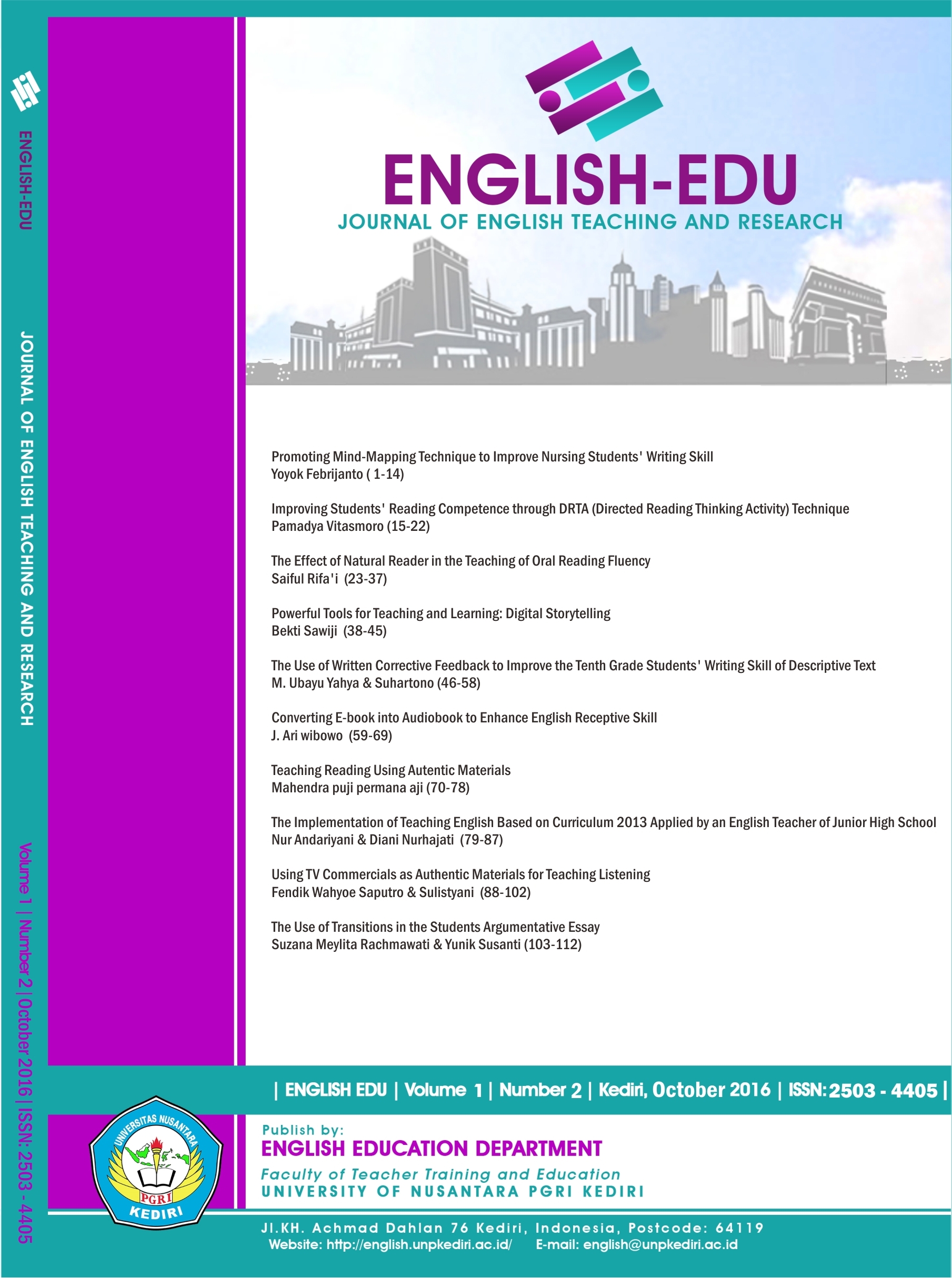POWERFUL TOOLS FOR TEACHING AND LEARNING: DIGITAL STORYTELLING
DOI:
https://doi.org/10.29407/jetar.v1i2.477Abstract
Digital storytelling is the telling of stories using computer-based tools to tell stories. It combines the art of telling stories with a variety of multimedia, including graphics, audio, video, and Web publishing. In the field of education, teachers and their students, from early childhood classrooms through graduate school, are using digital storytelling in many different content areas and across a wide range of grade levels. The purpose of this article is to explain the way how the digital storytelling can be created. There are five steps in creating digital storytelling in this workshop. 1. Determine Topic and Write a Script, 2. Collect Digital Resources, 3. Select Content and Develop a Storyboard, 4. Import, Record, Finalize, and 5. Share, Teach, Improve. It is expected that after having completed reading this article, the readers can create their own digital storytelling for educational use.
Key Words: Digital Storytelling, Computer Based Tools
Downloads
Downloads
Published
Issue
Section
License
Authors who publish with this journal agree to the following terms:
- Copyright on any article is retained by the author(s).
- The author grants the journal, the right of first publication with the work simultaneously licensed under a Creative Commons Attribution License that allows others to share the work with an acknowledgment of the work’s authorship and initial publication in this journal.
- Authors are able to enter into separate, additional contractual arrangements for the non-exclusive distribution of the journal’s published version of the work (e.g., post it to an institutional repository or publish it in a book), with an acknowledgment of its initial publication in this journal.
- Authors are permitted and encouraged to post their work online (e.g., in institutional repositories or on their website) prior to and during the submission process, as it can lead to productive exchanges, as well as earlier and greater citation of published work.
- The article and any associated published material is distributed under the Creative Commons Attribution-ShareAlike 4.0 International License








 Article template
Article template



